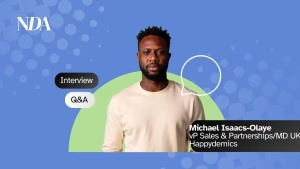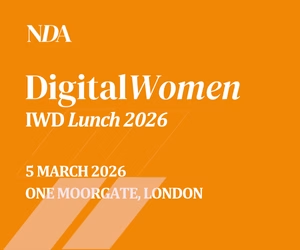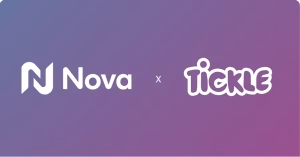
Q&A with Paige Tilley, Associate Director, Spark Foundry
Hawk Talks is our regular series in which we speak to industry experts about current themes and issues in their sector. This month, Genevieve Anker talks to Paige Tilley, Associate Director at Spark Foundry, about working with drinks and spirits business Brown-Forman and, in particular, the campaign for the company’s Jack Daniel’s brand, which won Mobile Marketing Magazine’s Effective Mobile Marketing Award for the best FMCG campaign of 2021.
Genevieve Anker (GA): Let’s start with a bit about your role at Spark Foundry and your media career to date
Paige Tilley (PT): I’ve been at Spark Foundry for nearly three years; having worked on spirits brands previously I position myself as an alcohol media specialist – which came as a surprise to my parents, who didn’t believe a successful career in alcohol was possible!
But from day one I’ve been fascinated by all aspects of marketing alcohol, from production, to branding, to the media planning and buying. As consumers we associate alcohol with relaxing, but promoting it definitely falls into the ‘complex’ camp, and I need to have my finger on the pulse at all times to make sure we remain compliant.
At Spark Foundry, we live and breathe our role as the ‘acceleration agency’, interlocking with each client’s business growth objectives, and underpinning them with media and marketing strategies that enable the company to expand rapidly to realise its ambitions. I love both the pace and the challenge of thinking beyond the short-term to ensure we deliver on this.
Along with this business-focused approach, a big pull of coming to Spark Foundry was working on the Brown-Forman account – it’s definitely my ‘baby’! I’m mainly focused on the Jack Daniel’s family of brands, although I do get involved on the company’s emerging brands portfolio; this includes Chambord, a premium black raspberry liqueur, and Fords Gin, which premiered in 2021 and was Brown-Forman’s first ecommerce launch.
GA: How have you seen the work that you’ve been doing with Brown-Forman evolve over your time on the account?
PT: A big focus continues to be growing the ecommerce presence of each brand, and ensuring that awareness generated from ad placements, whether above-the-line or digital, converts to sales. It’s a crowded marketplace, making it critical that we find ways for Brown-Forman to do something different that will help it cut through the competitive noise.
Jack Daniel’s is a legacy brand, but it’s key that it also appeals to a younger audience; it has to reflect their lifestyle and values – but also be a product they like. ‘Make It Count’ is the positioning we’ve activated; it centres round being hyper-relevant, particularly to Gen Z (aged 18 and over) in terms of their lifestyle and how they see the world.
This ethos is highly visible in the current Jack Daniel’s Tennessee Whiskey campaign; a series of ‘I’ve always wanted to do that’ vignettes, whether that’s ordering the entire menu in an upmarket restaurant, or buying a round of drinks for everyone in a bar.
Having developed the brand’s presence on Amazon and tested the various channels, we now have a wealth of understanding about how to reach each segment of the Jack Daniel’s audience in their preferred environment. This has enabled us to roll out a full funnel campaign that includes advertising on IMDb TV (the first spirits brand to do this globally) and during live sports events, as well as the option to visit the Amazon gift store and give Jack Daniel’s as the perfect present (an FMCG first).
And with Jack Daniel’s dominating London Waterloo over Christmas and New Year, thanks to its takeover of the giant external ad screens at the BFI IMAX, it’s also allowed me to tick something off my media placement bucket list…
GA: What have been the biggest challenges that Spark Foundry and Brown-Forman have faced in that time?
PT: Marketing in a responsible way to avoid our ads appealing to children (while also being creative enough to attract an 18+ audience) is difficult, particularly in the digital space and we constantly have to tread carefully. We ensure that we work with a wide variety of partners and continue to diversify how we buy media and target users.
An additional consideration is that today’s younger generation drinks less alcohol, and far more people are tee total than even a few years ago. However, of those that do imbibe, many will be quite selective, perhaps opting for one or two favourite tipples. Their choices might be based on their previous experience – while the ‘Instagrammability’ of a drink should never be under-estimated! Armed with this knowledge, we can target them with the right message from Jack Daniel’s.
It goes without saying that Covid has presented big headaches – first up was having two weeks to pivot a digital out-of-home (DOOH) campaign for Jack Daniel’s Tennessee Apple to TV as the first lockdown hit the UK in March 2020. However, the period has also offered opportunities. For example, initially unable to go out to bars and restaurants, consumers wanted to recreate the experience at home, with many taking to mixing their own cocktails. We slotted in by showing the versatility of the range of Brown-Forman brands, while educating people on how to serve the perfect mix.
Finally, no ‘challenges’ overview is complete these days without reference to the imminent death of the third-party cookie. It’s really important that we don’t lose the ability to find our audience – and it’s one of the reasons that working with Hawk, which targets via device IDs, is a future-proofing tactic.
GA: Talk to us about the award-winning Jack Daniel’s campaigns you’ve recently run with Hawk. What were the goals of the campaign? And why digital audio was added to the channel mix?
PT: We’d worked successfully with Hawk Platform on previous campaigns, but this was the first time they’d supported Jack Daniel’s Tennessee Whiskey and Jack Daniel’s Tennessee Apple at the same time. The former is a giant, but it’s not automatically top of mind, while our newer apple offering is aimed at people that might not necessarily be whiskey drinkers.
We needed to drive awareness for both drinks, but in different ways, and without cannibalising either. That required clearly separating the audiences, and communicating with each in a way that resonated to their different characteristics. It was also crucial that, although it was primarily an awareness-raising campaign, it could convert to a sale at any point.
Music was a passion point for both audiences; digital audio meant we could reach them in a place that they know and love.
GA: How did Hawk’s technology help you to execute this?
PT: Hawk is an incredibly supportive partner in terms of planning and strategic insight as well as deliverables. More than that, working with the team is a personal and professional pleasure.
The platform’s technology offers three core elements that were essential for this campaign.
First, its advanced targeting capabilities meant we could truly separate our audience, minimise any cannibalisation, and drive broad reach for both brands. Next, the in-house creative studio super-charged the creatives so that they stood out in each of the selected channels; they also sourced highly-engaging audio ads.
Finally, and perhaps most crucially, Hawk measures success beyond standard media metrics. Its InStore Impact tool showed the uplift in footfall that was directly related to the ads, insight that we used to optimise the campaign throughout its duration. Going even further, Hawk’s direct relationship with IRI let us measure in-store sales – the ultimate proof that a campaign has been successful.
GA: Did the campaign achieve its goals?
PT: Achieved is an understatement! We knew the results would be good, but I don’t think anyone could have predicted that they’d be as off-the-scale as they were – a cost-per-store visit that was 95% more cost-efficient than expected, for example.
This is a direct result of the three points above, and in particular the ability to optimise the campaign throughout its duration in order to maximise incremental footfall.
And none of that is rocket science; it is firmly rooted in getting the foundations right – the ‘brilliant basics’ as we like to call them. Ultimately, it’s about understanding your audience and from there, knowing how to reach them.










